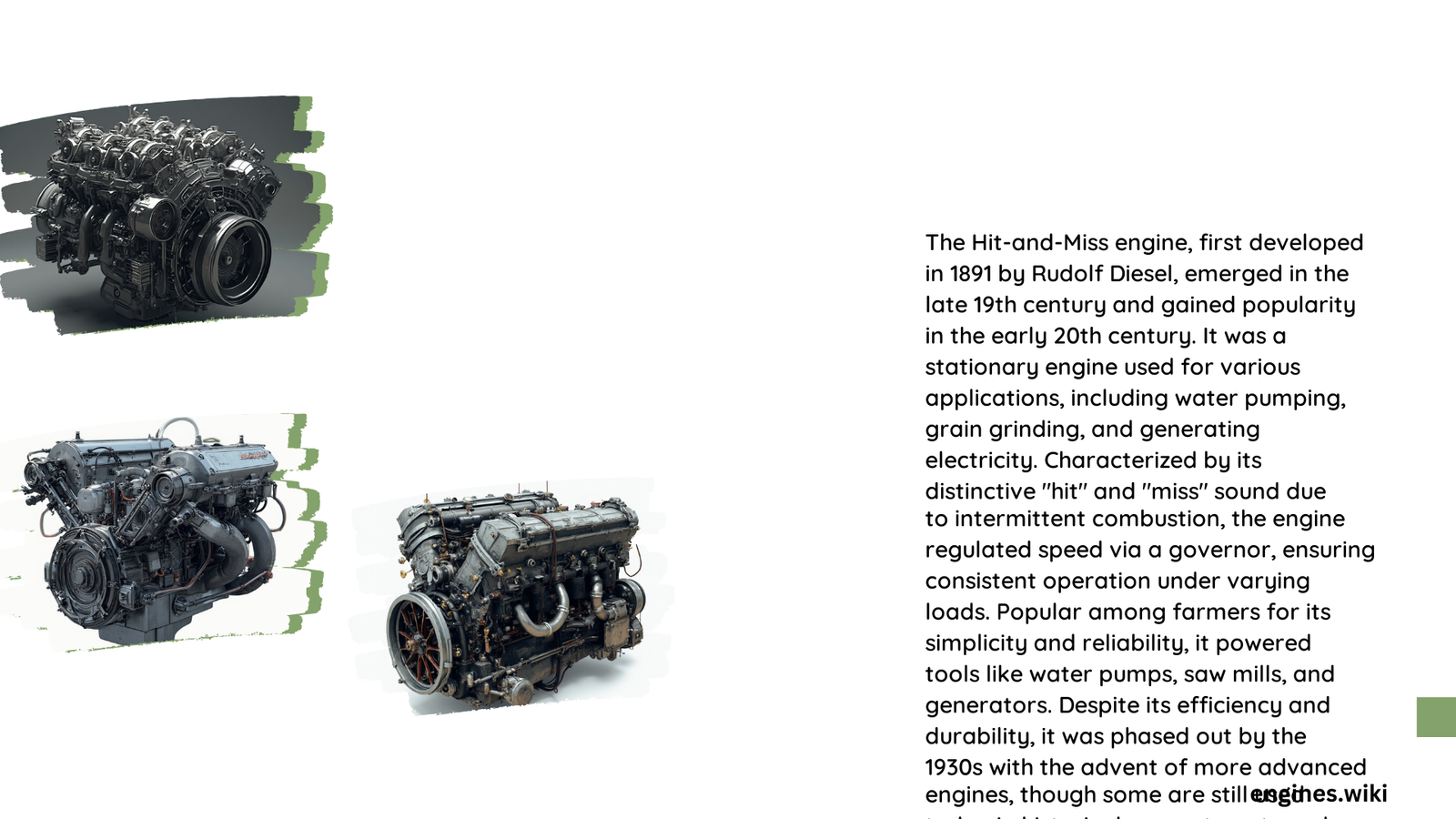Hit and miss engines represent a pivotal chapter in mechanical engineering, emerging in the late 19th century as transformative power sources that revolutionized agriculture and local industries. These unique internal combustion engines dominated rural mechanical power from the 1890s to the 1930s, providing reliable mechanical energy through an innovative governor-controlled operation that allowed engines to fire intermittently, conserving fuel and maintaining consistent performance across varying load conditions.
What Sparked the Development of Hit and Miss Engines?
The origins of hit and miss engines trace back to the groundbreaking work of Nikolaus August Otto and his atmospheric engine designs. By the late 1800s, engineers recognized the potential for more efficient power generation through controlled combustion processes.
Key Technological Milestones
| Year | Milestone | Significance |
|---|---|---|
| 1863 | Otto and Langen Atmospheric Engine | Foundational design for future internal combustion technologies |
| 1890s | First Commercial Hit and Miss Engines | Initial production by various manufacturers |
| 1910-1930 | Peak Popularity Period | Widespread adoption in farming and industrial applications |
How Did Hit and Miss Engines Function?

Hit and miss engines operated through a unique governor system that controlled engine speed by managing exhaust valve operations. This mechanism allowed the engine to:
- Fire only when RPM dropped below a specific threshold
- Conserve fuel during low-demand periods
- Maintain consistent mechanical output
- Provide reliable power for various agricultural tools
Typical Engine Characteristics
- Horsepower Range: 1-10 HP
- Fuel Types:
- Gasoline
- Kerosene
- Diesel
- Cooling Methods:
- Water-cooled hopper systems
- Air-cooled designs with fans
What Made Hit and Miss Engines Revolutionary?
The engines represented a significant technological leap by offering:
- Cost-effective power generation
- Simplified mechanical design
- Adaptability to multiple applications
- Self-regulating operational capabilities
Where Were Hit and Miss Engines Predominantly Used?
Hit and miss engines found extensive applications across various sectors:
- Agricultural Sector
- Powering water pumps
- Driving grain mills
- Operating farm machinery
- Industrial Applications
- Generating electricity
- Powering small workshops
- Driving utility equipment
When Did Hit and Miss Engines Decline?
The decline of hit and miss engines began in the 1930s with the introduction of more advanced, efficient engine technologies. By the 1940s, these engines had largely been replaced by modern internal combustion designs.
Why Are Hit and Miss Engines Historically Significant?
These engines represent a critical transitional technology, bridging mechanical power generation from steam-based systems to modern internal combustion engines. They democratized mechanical power, enabling rural communities to access sophisticated technological solutions.
Collector’s Perspective
Today, hit and miss engines are prized by vintage machinery enthusiasts and collectors who appreciate their historical significance and mechanical elegance.
Conclusion
Hit and miss engines embody a remarkable period of mechanical innovation, showcasing human ingenuity in solving complex power generation challenges with elegant, efficient solutions.
References:
– SlashGear: Hit-And-Miss Engines Overview
– Wikipedia: Hit-and-miss Engine History
– Northern Catskills Historical Society
